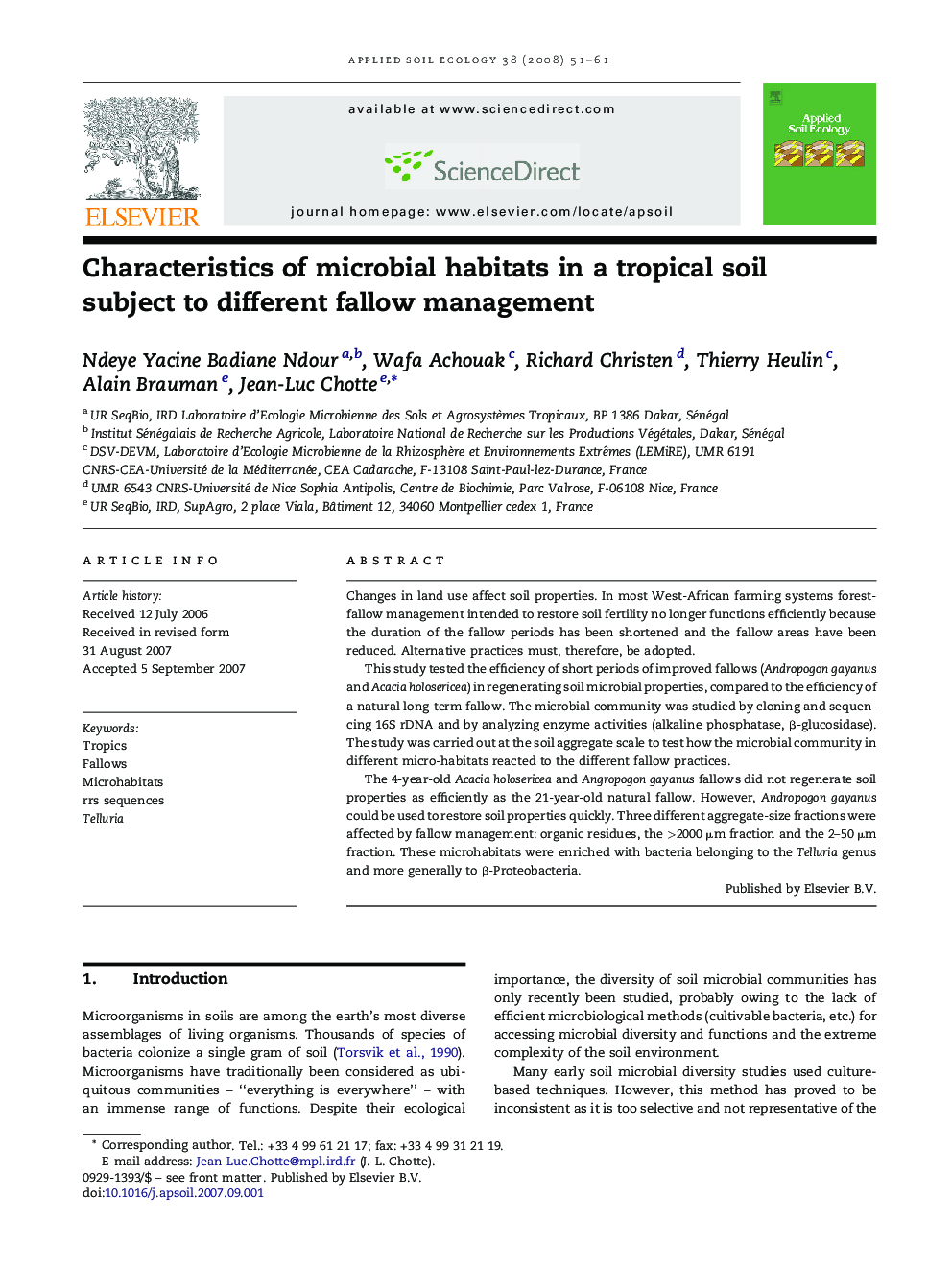| Article ID | Journal | Published Year | Pages | File Type |
|---|---|---|---|---|
| 4383281 | Applied Soil Ecology | 2008 | 11 Pages |
Changes in land use affect soil properties. In most West-African farming systems forest-fallow management intended to restore soil fertility no longer functions efficiently because the duration of the fallow periods has been shortened and the fallow areas have been reduced. Alternative practices must, therefore, be adopted.This study tested the efficiency of short periods of improved fallows (Andropogon gayanus and Acacia holosericea) in regenerating soil microbial properties, compared to the efficiency of a natural long-term fallow. The microbial community was studied by cloning and sequencing 16S rDNA and by analyzing enzyme activities (alkaline phosphatase, β-glucosidase). The study was carried out at the soil aggregate scale to test how the microbial community in different micro-habitats reacted to the different fallow practices.The 4-year-old Acacia holosericea and Angropogon gayanus fallows did not regenerate soil properties as efficiently as the 21-year-old natural fallow. However, Andropogon gayanus could be used to restore soil properties quickly. Three different aggregate-size fractions were affected by fallow management: organic residues, the >2000 μm fraction and the 2–50 μm fraction. These microhabitats were enriched with bacteria belonging to the Telluria genus and more generally to β-Proteobacteria.
